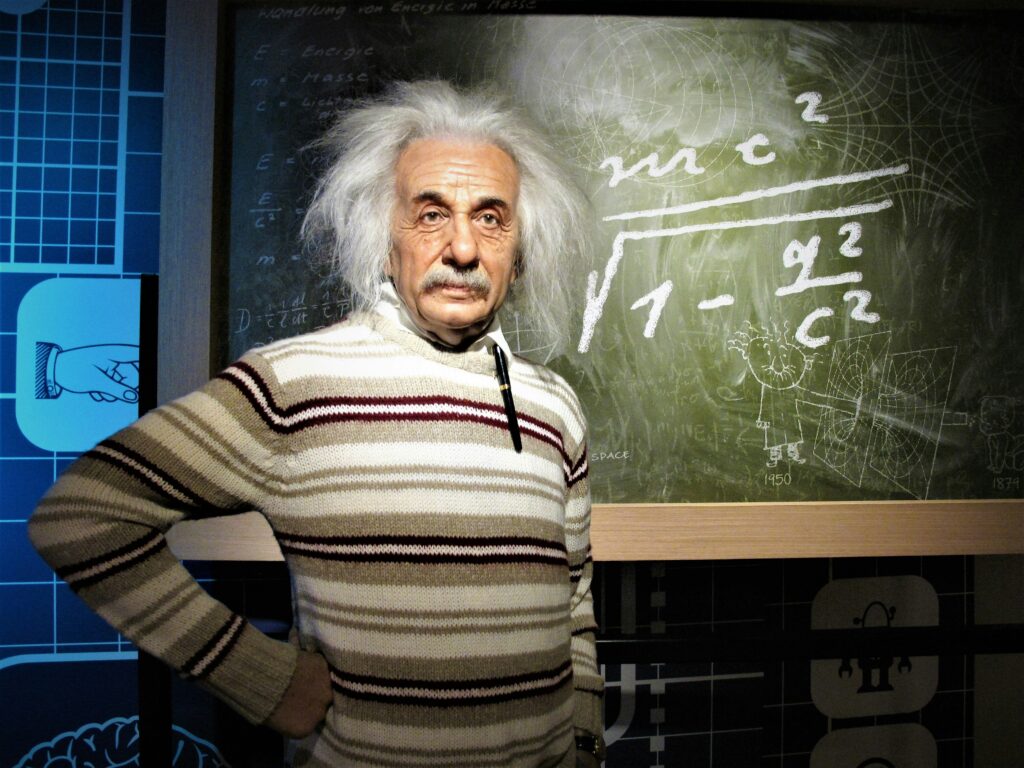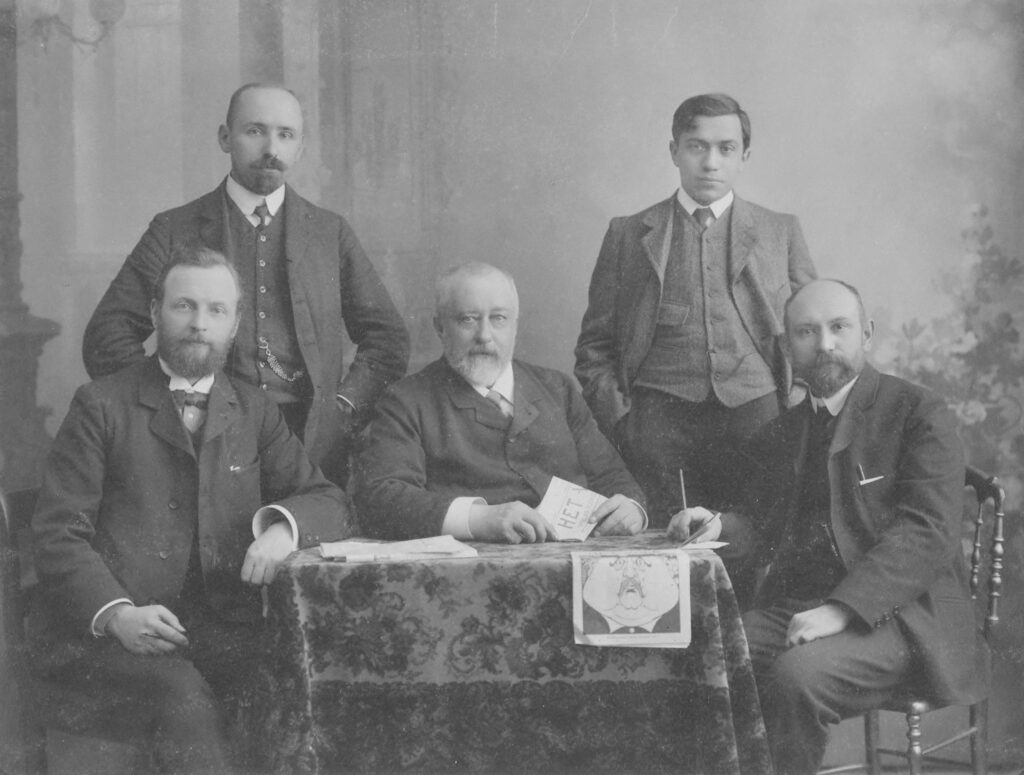Physics has shaped our understanding of the universe, from the smallest particles to the vast cosmos. The following list highlights 30 of the most influential physicists in history, their groundbreaking discoveries, and the modern and future impacts of their work. Each physicist’s contributions are presented with an emphasis on their significance and ongoing relevance.
1. Isaac Newton (1643–1727)
Discoveries:
- Formulated the three laws of motion, which describe the relationship between force, mass, and acceleration.
- Developed the law of universal gravitation, explaining the attraction between masses.
- Invented calculus (independently of Leibniz) to solve physical problems.
- Made significant contributions to optics, including the discovery that white light is composed of a spectrum of colors.
Modern and Future Impact:
Newton’s laws underpin classical mechanics, essential for engineering, space exploration, and everyday technology like vehicles and machinery. His work on gravitation laid the groundwork for understanding orbits, enabling satellite technology and space missions. Calculus remains a cornerstone of science and engineering. Future advancements in robotics, aerospace, and AI-driven simulations rely on Newtonian principles.
2. Albert Einstein (1879–1955)
Discoveries:
- Developed the theory of special relativity, introducing the equation E=mc², linking mass and energy.
- Formulated general relativity, redefining gravity as the curvature of spacetime.
- Contributed to quantum mechanics, particularly the photoelectric effect, explaining how light ejects electrons from materials (Nobel Prize, 1921).
Modern and Future Impact:
Einstein’s relativity is critical for GPS technology, which corrects for time dilation in satellite clocks. E=mc² underpins nuclear energy and medical imaging (e.g., PET scans). General relativity informs black hole research and gravitational wave detection (LIGO). Future applications include quantum computing and space exploration, where relativistic effects are crucial.

3. Galileo Galilei (1564–1642)
Discoveries:
- Pioneered the experimental scientific method, emphasizing observation and measurement.
- Discovered the moons of Jupiter, supporting the heliocentric model.
- Developed laws of motion for falling bodies and projectiles.
Modern and Future Impact:
Galileo’s work laid the foundation for modern physics and astronomy. His emphasis on empirical evidence influences scientific methodology today. His discoveries with telescopes advanced observational astronomy, impacting modern astrophysics and future space telescopes like the James Webb Space Telescope.
4. Niels Bohr (1885–1962)
Discoveries:
- Developed the Bohr model of the atom, describing electrons orbiting the nucleus in discrete energy levels.
- Contributed to quantum mechanics and the principle of complementarity.
Modern and Future Impact:
The Bohr model was a stepping stone for quantum mechanics, which drives modern technologies like semiconductors, lasers, and MRI machines. His work influences quantum computing and nanotechnology, with future applications in cryptography and materials science.
5. James Clerk Maxwell (1831–1879)
Discoveries:
- Formulated Maxwell’s equations, unifying electricity and magnetism into electromagnetism.
- Predicted electromagnetic waves, laying the foundation for radio and wireless communication.
Modern and Future Impact:
Maxwell’s equations are fundamental to modern electronics, telecommunications, and power generation. They enable technologies like Wi-Fi, radar, and medical imaging. Future applications include advanced wireless networks (e.g., 6G) and electromagnetic cloaking devices.
6. Michael Faraday (1791–1867)
Discoveries:
- Discovered electromagnetic induction, the basis for electric generators and transformers.
- Introduced the concept of electric and magnetic fields.
Modern and Future Impact:
Faraday’s work is the backbone of the electric power industry, enabling electricity generation and distribution. His discoveries drive modern motors, transformers, and renewable energy systems. Future impacts include advanced energy storage and electromagnetic technologies.
7. Werner Heisenberg (1901–1976)
Discoveries:
- Formulated the uncertainty principle, stating that position and momentum of a particle cannot be simultaneously measured with precision.
- Developed matrix mechanics, a foundation of quantum mechanics.
Modern and Future Impact:
The uncertainty principle is central to quantum mechanics, influencing technologies like quantum cryptography and electron microscopy. Future applications include quantum computing and secure communication systems.
8. Erwin Schrödinger (1887–1961)
Discoveries:
- Developed the Schrödinger equation, describing how quantum states evolve over time.
- Proposed the concept of wave mechanics in quantum theory.
Modern and Future Impact:
The Schrödinger equation is fundamental to quantum mechanics, enabling the design of semiconductors, lasers, and quantum computers. Its future impact includes advancements in quantum technologies and materials science.
9. Richard Feynman (1918–1988)
Discoveries:
- Developed quantum electrodynamics (QED), explaining interactions between light and matter (Nobel Prize, 1965).
- Introduced Feynman diagrams for visualizing particle interactions.
Modern and Future Impact:
QED underpins modern particle physics and technologies like lasers and quantum sensors. Feynman diagrams are used in particle accelerator research (e.g., CERN). His work influences quantum computing and future particle physics experiments.
10. Marie Curie (1867–1934)
Discoveries:
- Discovered radioactivity and isolated radium and polonium.
- Pioneered research on radioactive decay (Nobel Prizes in Physics 1903, Chemistry 1911).
Modern and Future Impact:
Curie’s work revolutionized medical treatments (e.g., radiation therapy for cancer) and nuclear physics. Her discoveries inform nuclear energy and imaging technologies. Future applications include advanced cancer treatments and nuclear safety.

Table 1: The Top 10 Physicists of All Time
| Rank | Physicist | Era | Key Discoveries | Modern Impact | Future Influence |
|---|---|---|---|---|---|
| 1 | Isaac Newton | 1643–1727 | Laws of motion, gravity, calculus | Space travel, engineering | AI-driven classical mechanics |
| 2 | Albert Einstein | 1879–1955 | Relativity (E=mc²), photoelectric effect | GPS, nuclear energy | Quantum gravity theories |
| 3 | Galileo Galilei | 1564–1642 | Heliocentrism, kinematics | Modern astronomy, telescopes | Interplanetary navigation |
| 4 | James Clerk Maxwell | 1831–1879 | Electromagnetic theory | Wireless communication, optics | Photonics, 6G networks |
| 5 | Niels Bohr | 1885–1962 | Quantum atomic model | Semiconductors, lasers | Quantum computing |
| 6 | Marie Curie | 1867–1934 | Radioactivity (Ra, Po) | Cancer therapy, nuclear medicine | Advanced radiopharmaceuticals |
| 7 | Richard Feynman | 1918–1988 | Quantum electrodynamics (QED) | Nanotechnology, quantum fields | Quantum AI |
| 8 | Werner Heisenberg | 1901–1976 | Uncertainty principle | MRI, quantum cryptography | Post-quantum theories |
| 9 | Erwin Schrödinger | 1887–1961 | Wave mechanics (Schrödinger equation) | Quantum chemistry, superconductors | Neuromorphic computing |
| 10 | Stephen Hawking | 1942–2018 | Black hole radiation, cosmology | Gravitational wave detection | Unified field theory |
11. Max Planck (1858–1947)
Discoveries:
- Introduced the concept of energy quanta, founding quantum theory (Nobel Prize, 1918).
- Formulated Planck’s constant, a fundamental constant in physics.
Modern and Future Impact:
Quantum theory drives modern electronics, solar cells, and quantum computing. Planck’s constant is used in precision measurements and quantum technologies. Future impacts include quantum communication and energy-efficient devices.
12. Ernest Rutherford (1871–1937)
Discoveries:
- Discovered the atomic nucleus and the proton.
- Developed the planetary model of the atom.
Modern and Future Impact:
Rutherford’s work laid the foundation for nuclear physics, enabling nuclear energy and medical isotopes. His discoveries influence particle accelerators and future nuclear fusion research.
13. Paul Dirac (1902–1984)
Discoveries:
- Developed the Dirac equation, predicting the existence of antimatter.
- Contributed to quantum mechanics and quantum field theory.
Modern and Future Impact:
Antimatter research informs medical imaging (e.g., PET scans) and particle physics. Dirac’s work influences quantum computing and future experiments at facilities like CERN.
14. Enrico Fermi (1901–1954)
Discoveries:
- Developed the first nuclear reactor, initiating controlled nuclear fission.
- Contributed to quantum theory and particle physics (Nobel Prize, 1938).
Modern and Future Impact:
Fermi’s work enabled nuclear power and medical isotopes. His research influences particle physics and future nuclear fusion technologies for clean energy.
15. Nikola Tesla (1856–1943)
Discoveries:
- Developed alternating current (AC) electrical systems.
- Contributed to wireless communication and electromagnetic technologies.
Modern and Future Impact:
Tesla’s AC system powers modern electrical grids. His work on wireless communication laid the groundwork for radio and modern wireless technologies. Future impacts include wireless power transmission and advanced electrical systems.
16. Robert Oppenheimer (1904–1967)
Discoveries:
- Led the Manhattan Project, developing the first atomic bomb.
- Contributed to quantum mechanics and nuclear physics.
Modern and Future Impact:
Oppenheimer’s work shaped nuclear technology and global security. His contributions to quantum mechanics influence modern physics research. Future impacts include nuclear disarmament and fusion energy.
17. Stephen Hawking (1942–2018)
Discoveries:
- Proposed Hawking radiation, suggesting black holes emit particles and can evaporate.
- Advanced theories on black holes and cosmology.
Modern and Future Impact:
Hawking’s work informs black hole research and gravitational wave detection. His theories guide future astrophysical observations and quantum gravity studies.
18. Christiaan Huygens (1629–1695)
Discoveries:
- Developed the wave theory of light.
- Discovered Saturn’s rings and its moon Titan.
Modern and Future Impact:
Huygens’ wave theory underpins optics and modern technologies like fiber optics. His astronomical discoveries influence planetary science and future space exploration.
19. Max Born (1882–1970)
Discoveries:
- Developed the statistical interpretation of the quantum wave function (Nobel Prize, 1954).
- Contributed to quantum mechanics and matrix algebra.
Modern and Future Impact:
Born’s work is foundational to quantum mechanics, enabling technologies like semiconductors and quantum computing. Future applications include quantum cryptography and materials science.
20. Johannes Kepler (1571–1630)
Discoveries:
- Formulated the three laws of planetary motion, describing elliptical orbits.
Modern and Future Impact:
Kepler’s laws are essential for space exploration, satellite orbits, and exoplanet discovery. They guide future missions to Mars and beyond.
Table 2: Revolutionary Physicists (11–20)
| Rank | Physicist | Key Contribution | Modern Application | Future Potential |
|---|---|---|---|---|
| 11 | Michael Faraday | Electromagnetic induction | Electric motors, transformers | Wireless energy transfer |
| 12 | Max Planck | Quantum theory (Planck constant) | LED lighting, solar cells | Quantum thermodynamics |
| 13 | Paul Dirac | Antimatter, relativistic QM | PET scans, particle accelerators | Antimatter propulsion |
| 14 | Enrico Fermi | Nuclear chain reaction | Nuclear power, reactors | Fusion energy |
| 15 | Nikola Tesla | AC power, wireless transmission | Power grids, IoT | Global wireless energy |
| 16 | Lise Meitner | Nuclear fission | Atomic energy | Clean nuclear reactors |
| 17 | Edwin Hubble | Expanding universe | Dark energy research | Multiverse theories |
| 18 | Peter Higgs | Higgs boson (mass mechanism) | Particle physics (LHC) | Beyond-Standard Model |
| 19 | Kip Thorne | Gravitational waves (LIGO) | Black hole astronomy | Time travel hypotheses |
| 20 | Chien-Shiung Wu | Parity violation (weak nuclear force) | Advanced particle detectors | Neutrino-based communication |
21. Heinrich Hertz (1857–1894)
Discoveries:
- Demonstrated the existence of electromagnetic waves, confirming Maxwell’s predictions.
- Discovered the photoelectric effect (later explained by Einstein).
Modern and Future Impact:
Hertz’s work enabled radio, television, and wireless communication. His discoveries influence modern telecommunications and future wireless technologies.
22. Edwin Hubble (1889–1953)
Discoveries:
- Discovered the expansion of the universe through redshift observations.
- Classified galaxies, establishing the Hubble sequence.
Modern and Future Impact:
Hubble’s work underpins modern cosmology, informing the Big Bang theory and dark energy research. His discoveries guide future telescopes and cosmological studies.
23. John Bardeen (1908–1987)
Discoveries:
- Co-invented the transistor (Nobel Prize, 1956).
- Developed the BCS theory of superconductivity (Nobel Prize, 1972).
Modern and Future Impact:
The transistor revolutionized electronics, enabling computers, smartphones, and modern technology. Superconductivity research informs MRI machines and future energy-efficient systems.
24. Lisa Meitner (1878–1968)
Discoveries:
- Co-discovered nuclear fission, explaining how atomic nuclei split.
Modern and Future Impact:
Fission powers nuclear reactors and medical isotopes. Meitner’s work influences future nuclear fusion and clean energy technologies.
25. Emmy Noether (1882–1935)
Discoveries:
- Developed Noether’s theorem, linking symmetries in physics to conservation laws.
Modern and Future Impact:
Noether’s theorem is fundamental to theoretical physics, underpinning particle physics and general relativity. It influences future quantum field theories and unified theories.
26. Wolfgang Pauli (1900–1958)
Discoveries:
- Proposed the Pauli exclusion principle, explaining electron behavior in atoms.
- Predicted the neutrino (Nobel Prize, 1945).
Modern and Future Impact:
The exclusion principle is key to chemistry and solid-state physics, enabling semiconductors and material science. Neutrino research informs cosmology and future particle experiments.
27. Carl Sagan (1934–1996)
Discoveries:
- Advanced planetary science and the search for extraterrestrial life.
- Popularized science through works like Cosmos.
Modern and Future Impact:
Sagan’s work inspires space exploration and astrobiology. His influence drives future missions to search for life on Mars and exoplanets.
28. Subrahmanyan Chandrasekhar (1910–1995)
Discoveries:
- Developed the Chandrasekhar limit, explaining the maximum mass of a white dwarf (Nobel Prize, 1983).
Modern and Future Impact:
His work informs stellar evolution and black hole formation. It guides future astrophysical observations and gravitational wave studies.
29. Murray Gell-Mann (1929–2019)
Discoveries:
- Proposed the quark model and the concept of strangeness in particle physics (Nobel Prize, 1969).
Modern and Future Impact:
The quark model is central to the Standard Model of particle physics, guiding research at CERN. Future impacts include deeper understanding of fundamental particles.
30. Vera Rubin (1928–2016)
Discoveries:
- Provided evidence for dark matter through galaxy rotation curves.
Modern and Future Impact:
Rubin’s work drives dark matter research, influencing cosmology and particle physics. Future experiments aim to detect dark matter particles and understand their role in the universe.
Table 3: Modern & Future Physics Pioneers (21–30)
| Rank | Physicist | Key Contribution | Current Impact | Future Influence |
|---|---|---|---|---|
| 21 | Roger Penrose | Black hole thermodynamics | Quantum gravity models | Consciousness in physics |
| 22 | Donna Strickland | Ultrashort laser pulses | Precision surgery, attoscience | Laser-driven fusion |
| 23 | Gerard ‘t Hooft | Renormalization (QFT) | Quantum field theory | Holographic principle |
| 24 | Andrea Ghez | Supermassive black holes | Galactic evolution | Wormhole research |
| 25 | David Deutsch | Quantum computing theory | Qubit processors | AGI (Artificial General Intelligence) |
| 26 | Juan Maldacena | AdS/CFT duality (string theory) | Holographic universe | Quantum gravity |
| 27 | Alain Aspect | Quantum entanglement (Bell tests) | Quantum cryptography | Quantum internet |
| 28 | Fabiola Gianotti | Higgs boson discovery (CERN) | Collider physics | Dark matter detection |
| 29 | Michio Kaku | String field theory | Futurism, science communication | Interstellar travel |
| 30 | Sabine Hossenfelder | Quantum foundations | Ethics in AI & physics | Post-quantum theo |
These 30 physicists have profoundly shaped our understanding of the universe and its fundamental laws. Their discoveries form the bedrock of modern technology, from electricity and nuclear power to quantum computing and space exploration. As we advance into the future, their work continues to inspire innovations in energy, communication, medicine, and our quest to understand the cosmos.
from Newton’s gravity to quantum AI, these physicists laid the foundation for tomorrow’s breakthroughs. The next Einstein may emerge from quantum biology, dark matter research, or extraterrestrial physics.
Who Will Define 22nd-Century Physics?
- Demis Hassabis (AI-driven discovery)
- Lisa Randall (extra-dimensional physics)
- Avi Loeb (extraterrestrial technology)















